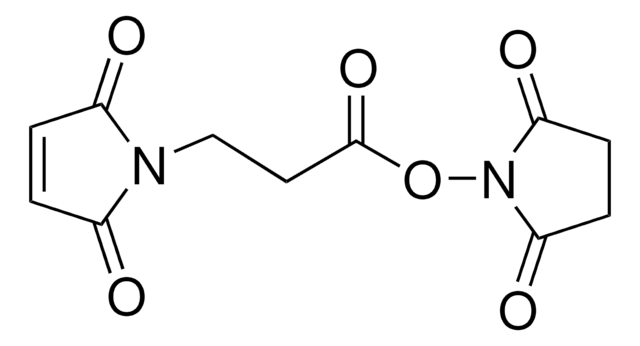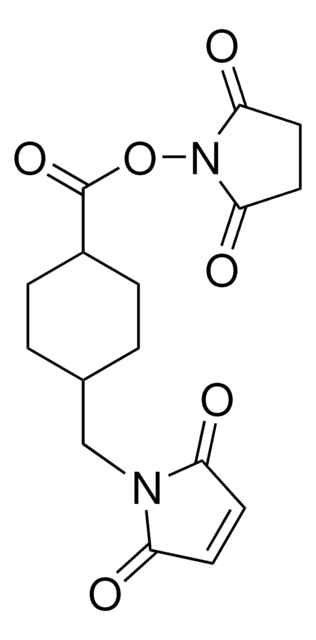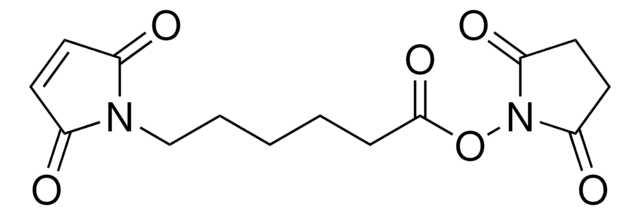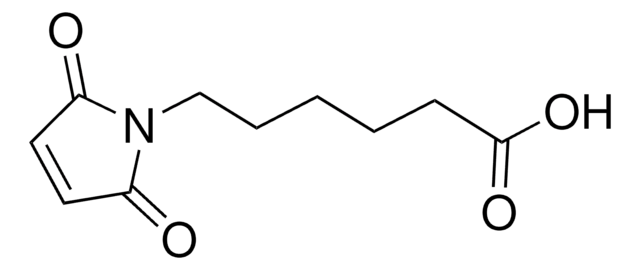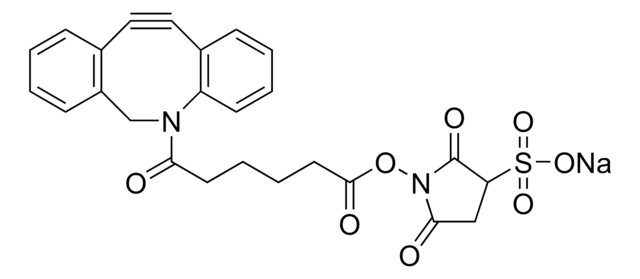803235
Sulfo-EMCS (N-(ε-maleimidocaproyloxy) sulfosuccinimide ester)
About This Item
Recommended Products
form
powder
mol wt
410.33
reaction suitability
reagent type: cross-linking reagent
storage condition
desiccated
solubility
water: soluble
functional group
maleimide
shipped in
ambient
storage temp.
2-8°C
SMILES string
O=C1CC(S(=O)([O-])=O)C(N1OC(CCCCCN2C(C=CC2=O)=O)=O)=O.[Na+]
InChI
1S/C14H16N2O9S.Na/c17-10-5-6-11(18)15(10)7-3-1-2-4-13(20)25-16-12(19)8-9(14(16)21)26(22,23)24;/h5-6,9H,1-4,7-8H2,(H,22,23,24);/q;+1/p-1
InChI key
MIDXXTLMKGZDPV-UHFFFAOYSA-M
General description
Features and Benefits
- Reactive groups: sulfo-NHS ester and maleimide
- Reactive towards: amino and sulfhydryl groups
- Sulfo-NHS ester end couples with primary amines at pH 7-9 to form stable amide bonds
- Maleimide reacts with -SH groups at pH 6.5-7.5, forming stable thioether linkages
- Non-cleavable
- Water-soluble (compare to EMCS)
- Aliphatic spacer offers low potential for eliciting an immune response
Caution
Storage Class Code
11 - Combustible Solids
WGK
WGK 3
Flash Point(F)
Not applicable
Flash Point(C)
Not applicable
Choose from one of the most recent versions:
Certificates of Analysis (COA)
Don't see the Right Version?
If you require a particular version, you can look up a specific certificate by the Lot or Batch number.
Already Own This Product?
Find documentation for the products that you have recently purchased in the Document Library.
Customers Also Viewed
Our team of scientists has experience in all areas of research including Life Science, Material Science, Chemical Synthesis, Chromatography, Analytical and many others.
Contact Technical Service

